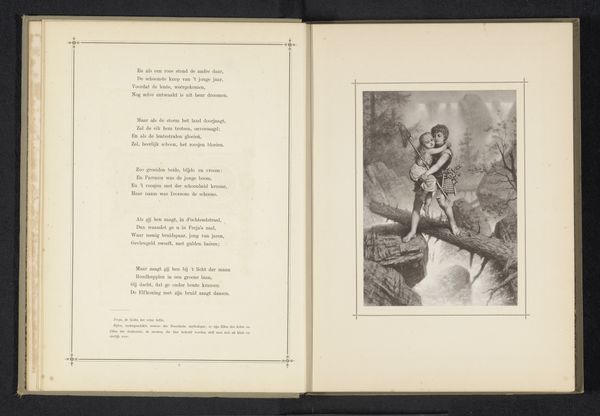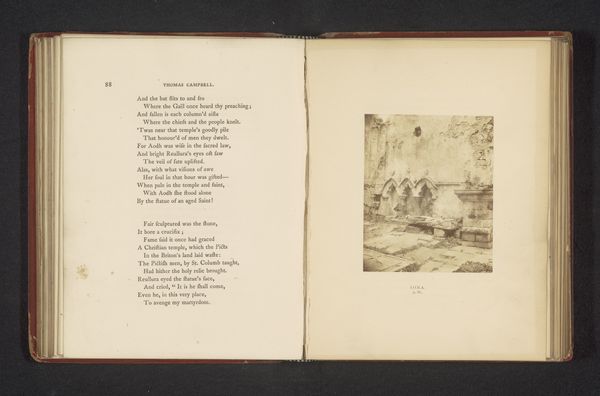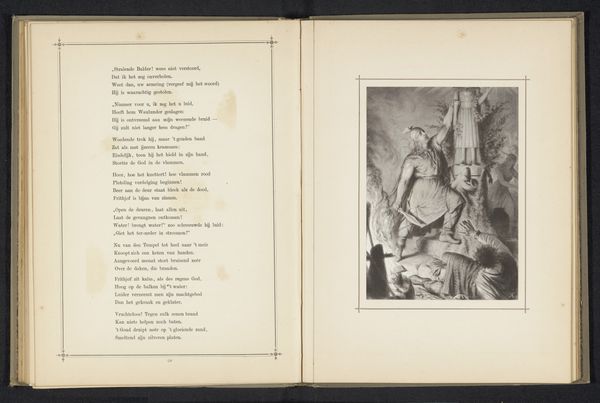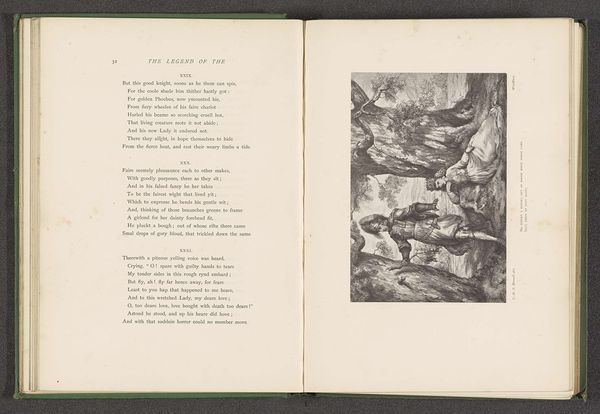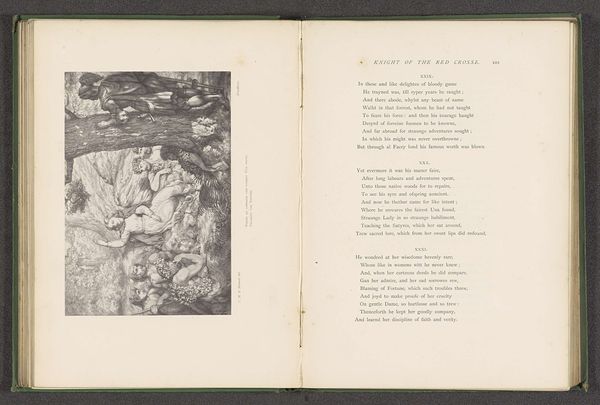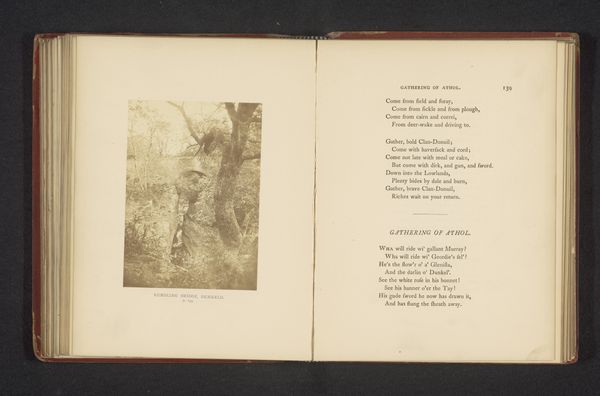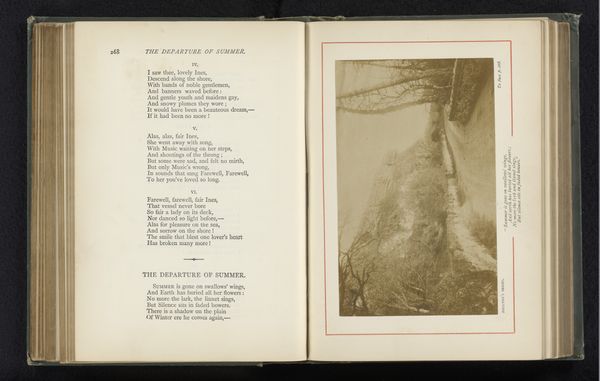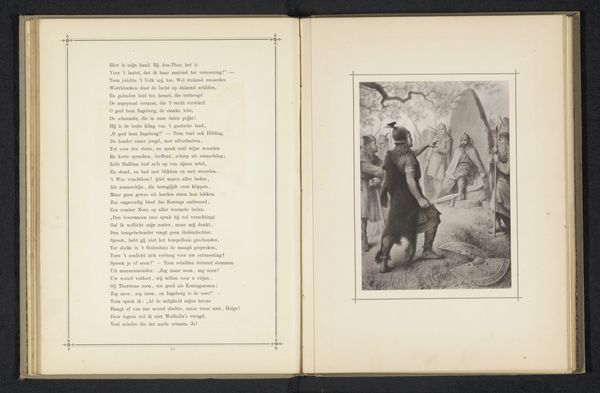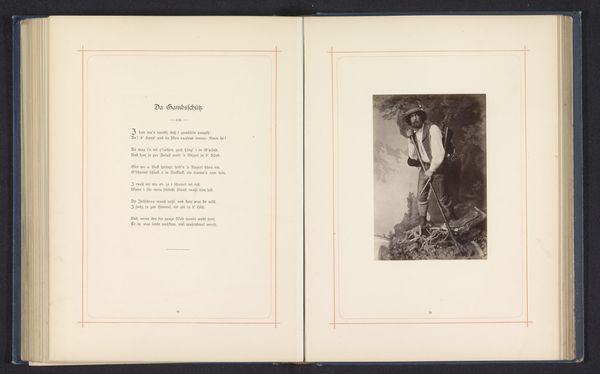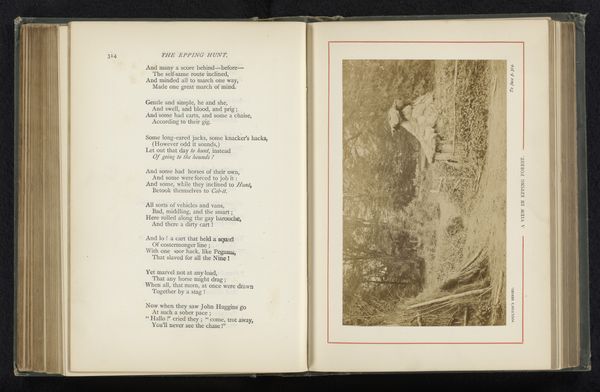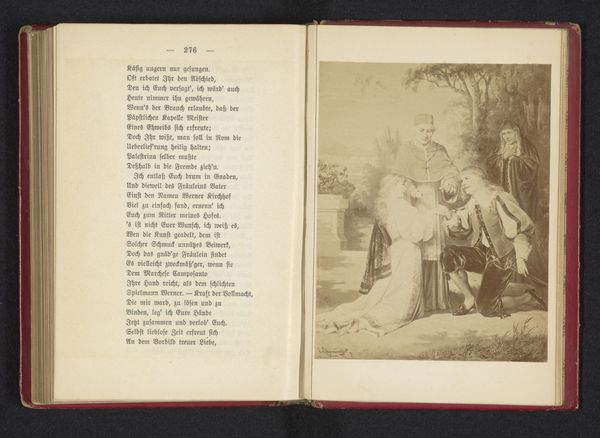
Fotoreproductie van een tekening van een vrouw met een mes voor een weefgetouw c. 1872 - 1882
0:00
0:00
Dimensions: height 174 mm, width 124 mm
Copyright: Rijks Museum: Open Domain
Curator: This photogravure reproduces a drawing dating from around 1872 to 1882. The anonymous artist titled it "Fotoreproductie van een tekening van een vrouw met een mes voor een weefgetouw"— "Photographic reproduction of a drawing of a woman with a knife before a loom." The scene unfolds in a dramatic grayscale. What's your initial take? Editor: Dark. The value contrasts are incredibly stark, lending an almost melodramatic feel, especially with that poised figure, blade in hand, standing adjacent to the loom. Curator: Indeed. The image’s composition certainly draws attention to the implied narrative. Note the Romanticism style in play. The loom is right there, suggesting the materials that dictate her life, yet she threatens it. Editor: I’m more fascinated by that act of implied threat and destruction. We’ve got paper as substrate and drawing/print as medium. What would that printed paper have been used for, consumed as? Curator: That is what Romanticism can conjure, the conflict and inner torment. The way the light hits her dress and face creates such sharp highlights and shadows is magnificent. Observe how those formal elements intensify her resolve. The texture of her dress, captured in precise detail, feels palpable, adding to the visual tension. Editor: She is positioned above these raw materials for weaving–there’s definitely a symbolic resistance. And what is she to do when the tools that are supposedly intended to aid her, keep her prisoner? Curator: The drawing style has undeniable emotional impact, and even considering this version is a print, the hand of the artist remains evident, channeling the emotions of Romanticism into the depiction of this powerful female figure. Editor: Perhaps her disruption is more akin to breaking free from repetitive labor–labor intended to subdue her, and many others like her, in the act of reproducing capital and maintaining class structure. Thanks to photographic reproduction the same picture may live on in infinite copies. Curator: I concur that this interplay of drama, material culture, and rebellion leaves a strong afterimage long after you've moved to the next piece. Editor: Definitely a striking commentary. An instance where the image refuses to be confined.
Comments
No comments
Be the first to comment and join the conversation on the ultimate creative platform.
